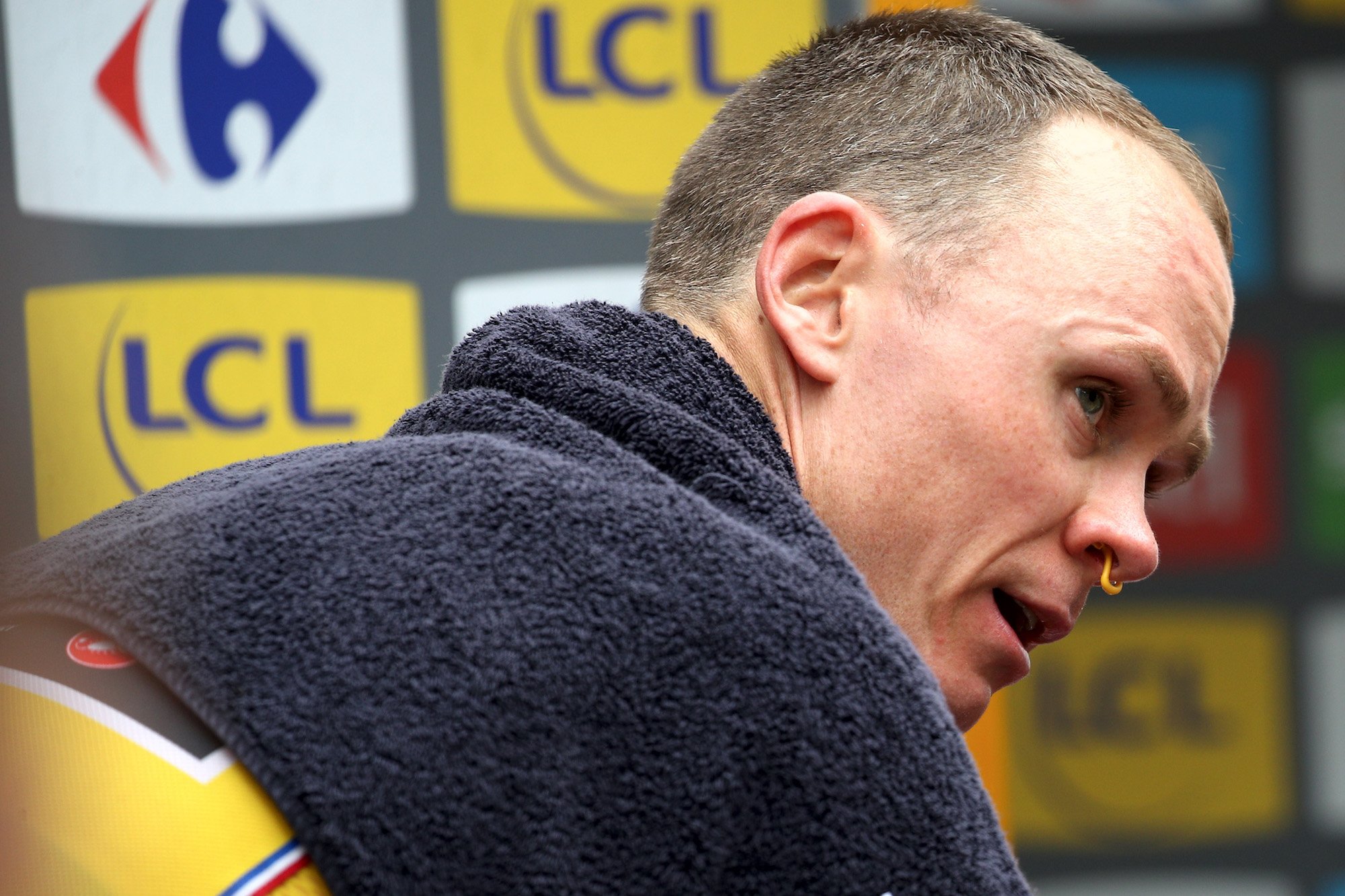 Defending Tour champ Chris Froome cooling down while wearing a nasal dilator.Chris Graythen/Getty Images
Defending Tour champ Chris Froome cooling down while wearing a nasal dilator.Chris Graythen/Getty Images
Tour de France star Chris Froome (Team Sky) is cycling’s best stage racer, and he’s done a lot of things to try gain an edge over his rivals.
He trains like a beast, using mental tricks on himself so that he can go harder. He drastically cut back on carbs and lost 20 pounds. He impersonated a cycling official so that he could race in Europe. And he rides special non-round chainrings. It’s all part of his team’s approach to improving performance.
Sky is synonymous with “marginal gains,” which general manager Dave Brailsford has explained as follows:
“The whole principle of marginal gains came from the idea that if you broke down everything that could impact on a cycling performance — absolutely everything you could think of — and then you improved everything little thing by 1%, when you clump it all together, you’re going to get quite a significant increase in performance. So we set about looking at everything we could.”
At this year’s Tour, Froome has been seen wearing a nasal dilator called the Turbine. The three-time race winner has been using it for a while. Riders are allowed to wear it in competition, according to the UCI, but we’ve seen Froome use it only after racing during his cooldown.
The company says on its website that the Turbine is “proven in a clinical trial to increase air flow through the nose by an average of 38%.” Froome is also quoted on the site as saying:
“Great piece of equipment. Less energy and distraction with breathing means I can use more energy in other important parts of my riding, like focussing on power, cadence and keeping my head in the game.”
He tweeted in 2014 that he experienced a “noticeable difference” when using the product:
Yesterday was my first outing with @theturbinecom. Noticeable difference, will definitely use again!
— Chris Froome (@chrisfroome) August 24, 2014
But one team’s performance specialist told Business Insider that, “In short, while it may increase the flow of air through the nasal passages, I don’t believe it has any impact on performance whatsoever.”
In a study published in April by the Journal of Science and Medicine in Sport, the authors concluded that the “Turbine and Breathe Right nasal dilators are ineffective at enhancing 20-km cycling time trial performance.”













